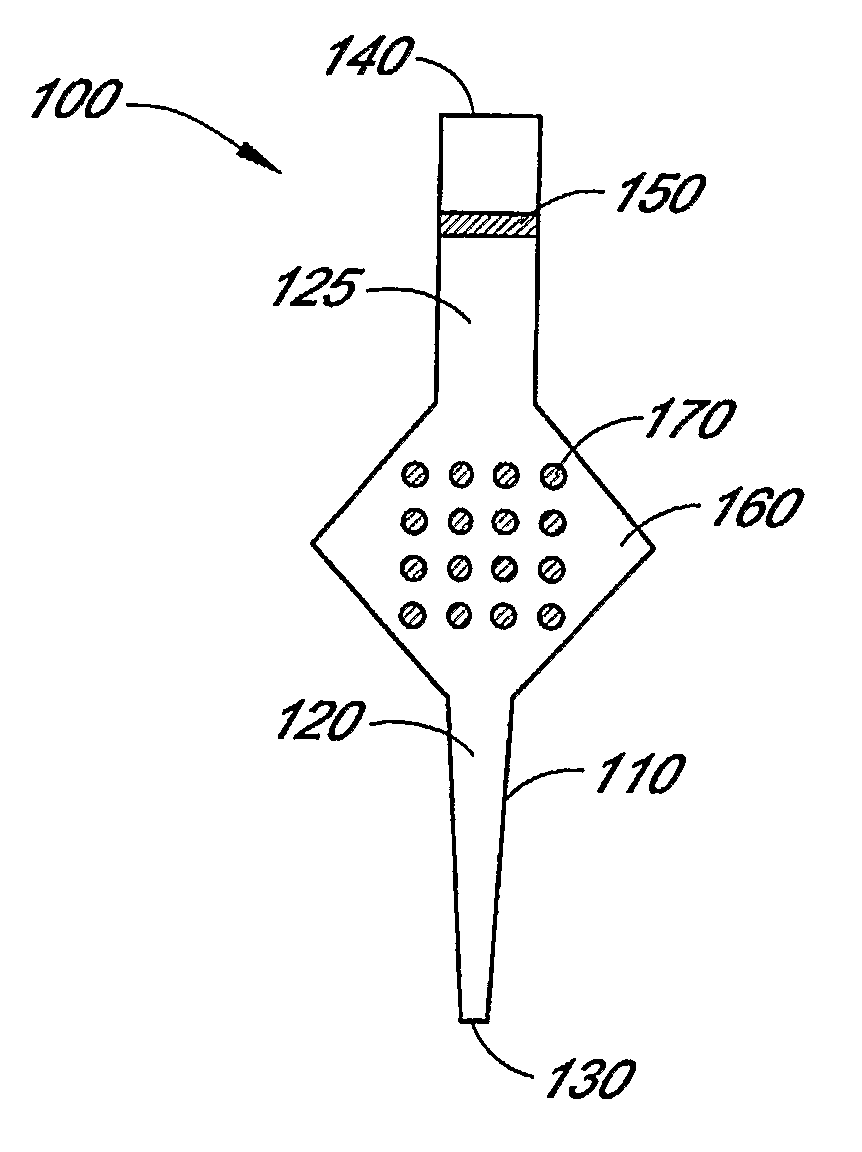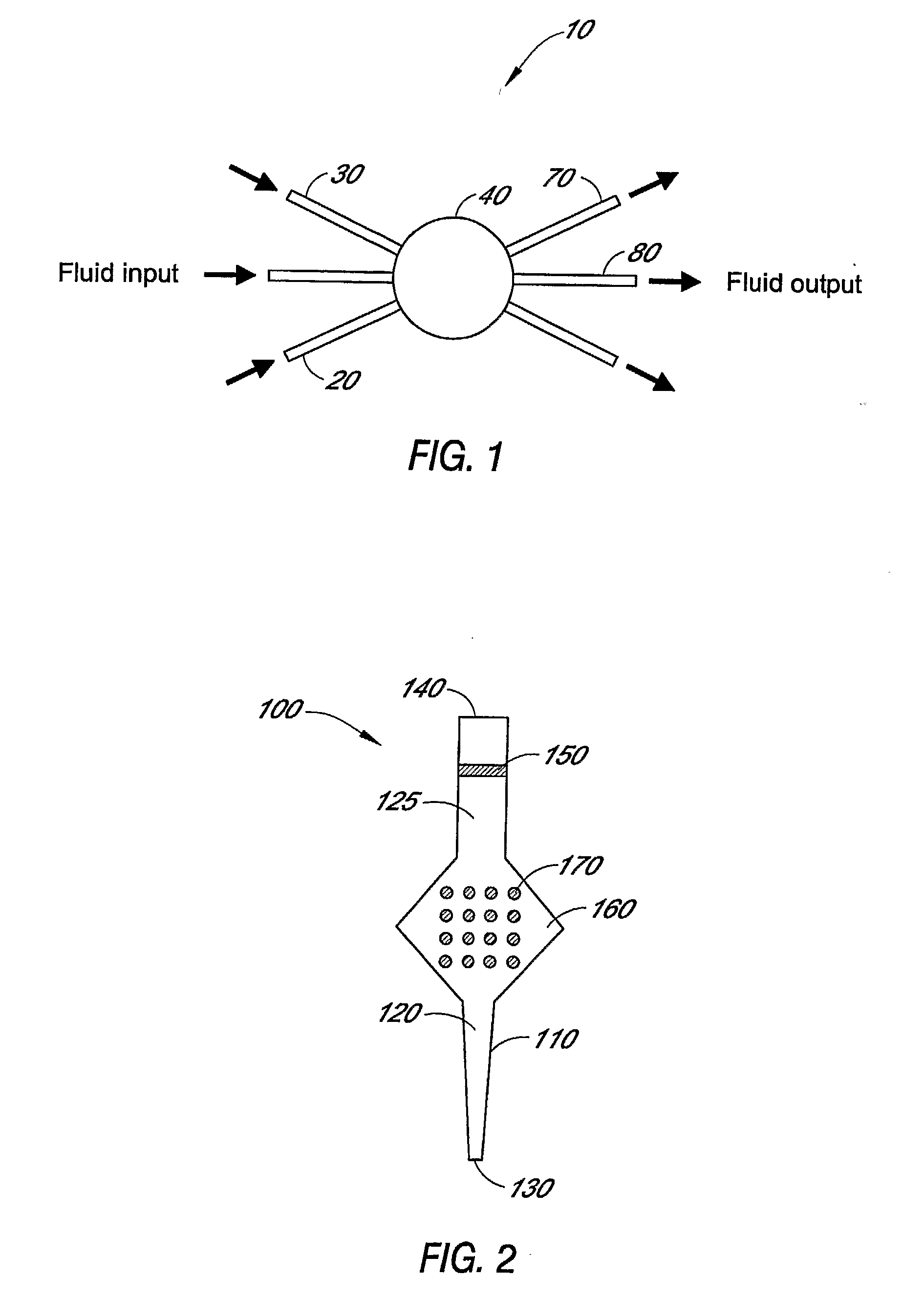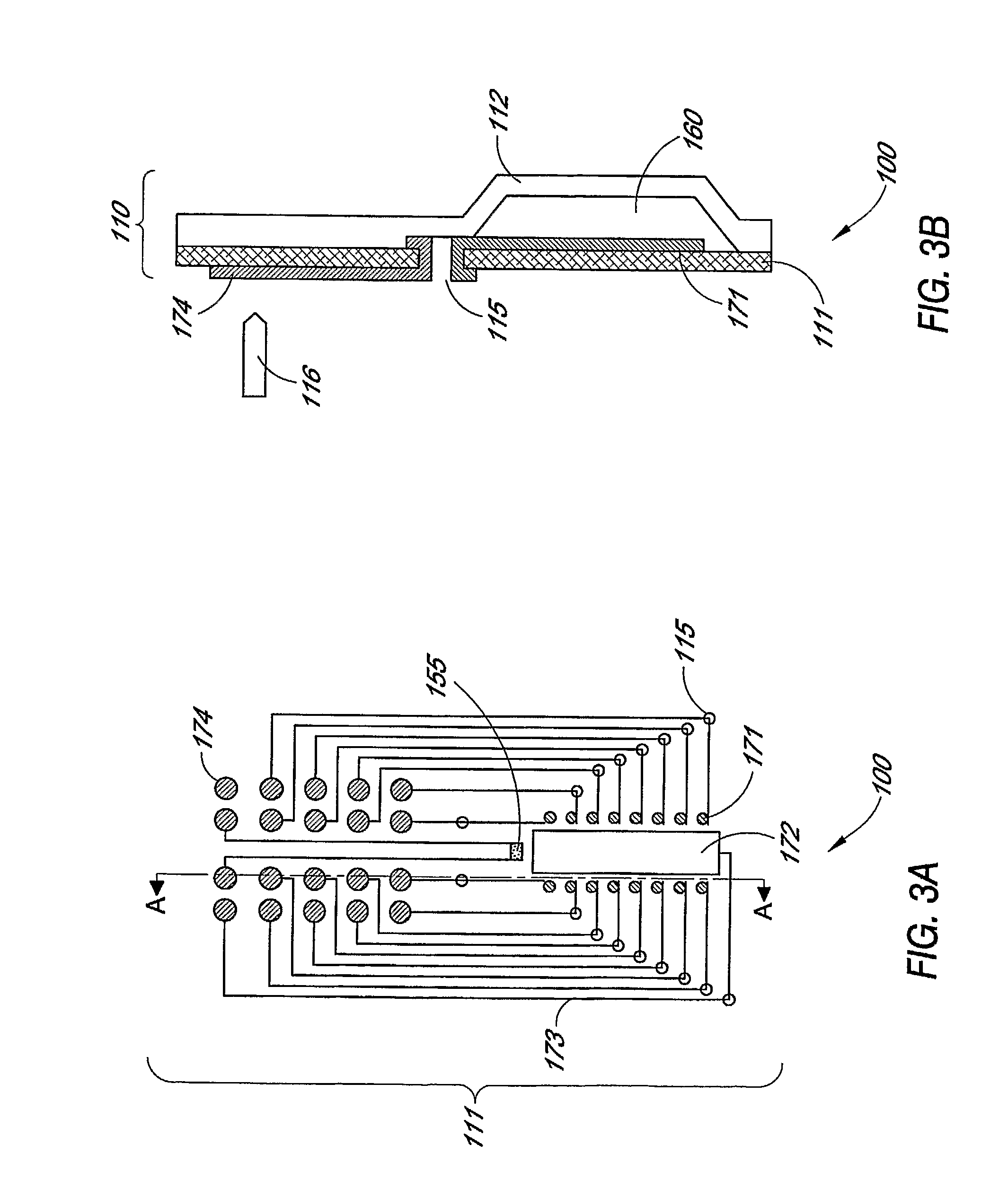Fluidic cartridges for electrochemical detection of DNA
a technology of electrochemical detection and fluidic cartridge, which is applied in the field of flow cells in electrochemical detection arrays, can solve the problems of unreliability, high cost, and relatively complex device type b>10/b>
- Summary
- Abstract
- Description
- Claims
- Application Information
AI Technical Summary
Benefits of technology
Problems solved by technology
Method used
Image
Examples
example 1
[0125]This example demonstrates one method in which one embodiment of a FCC 100 can be used. A FCC 100 is attached to a pipette by the FCC's second opening 140 and a pipette tip is attached to the first opening 130 of the FCC. A first amount of a nucleic acid sample which is to be examined is placed in a solution in a well 190 of a RC 180 and the solution with the nucleic acids is collected through the pipette tip attached to the FCC 100 via suctioning with the pipette. A volume sufficient to allow the sample to contact the electrode array is used. The electrodes 171 in the FCC contain PNA probes that are complementary to the sequence that one desires to detect. Rolling circle amplification is then used to elongate the nucleic acids contained within the target nucleic acids. Reagents for the rolling circle amplification are taken from another well 190 in the RC 180 and into the chamber 160 by placing the first opening 130 into the reagents and applying additional suction to the seco...
example 2
[0126]This example demonstrates how a target RNA sequence in a biological sample can be purified, amplified and hybridized using a pipette tip 50 and the FCC 100. FIG. 5 outlines how the FCC is used in this example. The volume (the volume of solution that the entire internal volume of the FCC can contain and control movement thereof) of the FCC is 200 μl.
[0127]The 100 μl sample is aspirated into a container, such as a pipette tip 50, and the sample is then dumped into a well 190 with 100 μl lysing reagent and with magnetic beads that can bind to the target RNA sequence. The mixing of the reagents is then enhanced by pushing the mixture in and out of the pipette tip 50 for a few times. The mixture is then aspirated into the pipette tip 50 and incubated at 60° C. for 20 min and then at room temperature for 20 minutes. The reagent is then dumped into a waste well while the magnetic beads and target sample are held in the pipette tip 50 by a magnetic force. The pipette tip 50, the magne...
PUM
 Login to View More
Login to View More Abstract
Description
Claims
Application Information
 Login to View More
Login to View More - R&D
- Intellectual Property
- Life Sciences
- Materials
- Tech Scout
- Unparalleled Data Quality
- Higher Quality Content
- 60% Fewer Hallucinations
Browse by: Latest US Patents, China's latest patents, Technical Efficacy Thesaurus, Application Domain, Technology Topic, Popular Technical Reports.
© 2025 PatSnap. All rights reserved.Legal|Privacy policy|Modern Slavery Act Transparency Statement|Sitemap|About US| Contact US: help@patsnap.com



